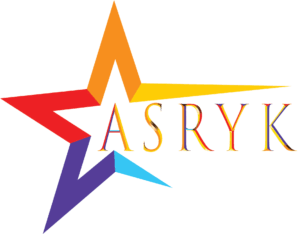Deepfakes: A Dive into the Manipulative Magic of AI
Deepfakes, a portmanteau of “deep learning” and “fake,” have taken the world by storm. These synthetic media creations use artificial intelligence (AI) to realistically superimpose a person’s likeness onto another body, creating videos or images that appear genuine. While the technology holds immense creative potential, its ability to manipulate reality has raised serious concerns about its ethical implications and potential misuse.
This article delves into the world of deepfakes, exploring its technical aspects, applications, and the ethical quagmire it presents. We will examine how deepfakes are created, the different techniques used, and the evolving sophistication of the technology. We will then explore the potential benefits of deepfakes in various fields, from entertainment and education to art and social commentary. Finally, we will address the ethical concerns surrounding deepfakes, including the potential for disinformation, identity theft, and the erosion of trust in media.
Unveiling the Deepfake Creation Process
At the heart of deepfakes lies a type of AI called deep learning. Deep learning algorithms are trained on massive amounts of data, allowing them to identify patterns and relationships. In the case of deepfakes, the AI is trained on videos and images of a target person. The algorithm learns the person’s facial features, expressions, skin tone, and even the way they move their head and body.
Once trained, the AI can then generate new, synthetic media featuring the target person. There are two main techniques used to create deepfakes:
- Deep learning-based video frame synthesis: This technique involves training the AI on a large dataset of videos of the target person. The AI then analyzes each frame of the video, breaking down the person’s face and body into individual components. It then uses this information to generate new video frames featuring the target person’s likeness superimposed onto another body.
- Audio deepfakes: This technique focuses on manipulating a person’s voice. The AI is trained on audio recordings of the target person and can then synthesize new speech that sounds remarkably like the original.
The sophistication of deepfakes has been steadily increasing. Early attempts were often crude and easily detectable. However, with advancements in AI technology, deepfakes are becoming increasingly realistic, making it difficult to distinguish between real and synthetic media.
A Spectrum of Applications: From Entertainment to Social Commentary
Deepfakes offer a wide range of potential applications across various fields. Here are some examples:
- Entertainment: Deepfakes can be used to create humorous parodies, special effects in movies, or even revive deceased actors for cameo appearances.
- Education: Deepfakes can be used to create interactive learning experiences, allowing students to virtually interact with historical figures or engage in simulations of real-world scenarios.
- Art and Social Commentary: Artists can use deepfakes to create thought-provoking pieces that challenge our perception of reality and explore themes of identity and manipulation.
- Social Media: Deepfakes can be used to create personalized filters or avatars for social media platforms.
However, the potential benefits of deepfakes are counterbalanced by significant ethical concerns.
The Ethical Minefield: Disinformation, Identity Theft, and Erosion of Trust
The ability of deepfakes to manipulate reality raises a number of ethical issues, including:
- Disinformation: Deepfakes can be used to spread misinformation and propaganda. Malicious actors can create fake videos of politicians saying things they never did, potentially swaying public opinion and undermining democratic processes.
- Identity Theft: Deepfakes can be used to impersonate someone online, potentially leading to financial fraud, reputational damage, or even blackmail.
- Erosion of Trust in Media: The proliferation of deepfakes can erode public trust in media, making it difficult to distinguish between real and fake news.
These ethical concerns necessitate the development of robust safeguards to mitigate the potential harms of deepfakes. Here are some potential solutions:
- Deepfake detection tools: Researchers are developing algorithms that can identify deepfakes with greater accuracy. These tools can be used by social media platforms and news organizations to flag potentially manipulated content.
- Transparency and education: Educating the public about deepfakes and how they are created is crucial. People need to be critical consumers of media and develop healthy skepticism towards anything that seems too good to be true.
- Regulation: There is ongoing debate about the need for regulations to govern the use of deepfakes. Regulations could aim to limit the creation and distribution of malicious deepfakes while protecting freedom of expression.
The deepfake phenomenon is still evolving, and the ethical and legal frameworks surrounding it are still under development. As technology continues to advance, it is crucial to have open and honest conversations about its potential benefits and harms.
The future of deepfakes is uncertain, but one thing is clear: they will continue to evolve at a rapid pace. Here are some potential areas of development and challenges to consider:
Advancements in Deepfake Technology:
- Increased Realism: Deepfakes will likely become even more realistic, making it even harder to distinguish between real and synthetic media. This could exacerbate the problem of disinformation and make deep-fake detection tools even more critical.
- Accessibility: Deepfake creation tools could become more user-friendly and accessible to the general public. This democratization of technology could have both positive and negative consequences. On the one hand, it could lead to more creative applications of deepfakes. On the other hand, it could make it easier for malicious actors to create fakes.
- Emerging Techniques: New deep learning techniques could emerge that allow for even more sophisticated manipulation of media. For example, deepfakes could be used to manipulate not just a person’s appearance or voice but also their emotions and expressions.
Addressing the ethical challenges:
- Deepfake Detection Arms Race: As deepfakes become more sophisticated, so too will deepfake detection tools. This ongoing arms race will be crucial in the fight against misinformation.
- Regulation vs. Free Speech: The debate over deep-fake regulation will likely continue. Finding a balance between protecting the public from harm and safeguarding freedom of expression will be a challenge.
- Social and Cultural Impact: The widespread use of deepfakes could have a profound impact on society and culture. It could lead to a decline in trust in authority figures and institutions and a blurring of the lines between reality and fiction.
Potential Solutions and Areas of Hope:
- Technological Solutions: Advancements in watermarking and digital fingerprinting technologies could help authenticate the origin of videos and images, making it easier to identify fakes.
- Media Literacy Education: Education programs that teach people how to critically evaluate media and identify deepfakes will be essential in the fight against misinformation.
- Transparency and Accountability: Platforms that host user-generated content need to develop clear policies on deepfakes and take steps to remove malicious content.
In conclusion, deepfakes are a powerful technology with the potential to revolutionize the way we create and consume media. However, they also pose significant ethical challenges. By fostering open dialogue, developing robust safeguards, and promoting media literacy, we can harness the potential of deepfakes for good while mitigating the risks. The future of deepfakes rests on our collective ability to navigate the ethical complexities of this technology and ensure it is used responsibly.



